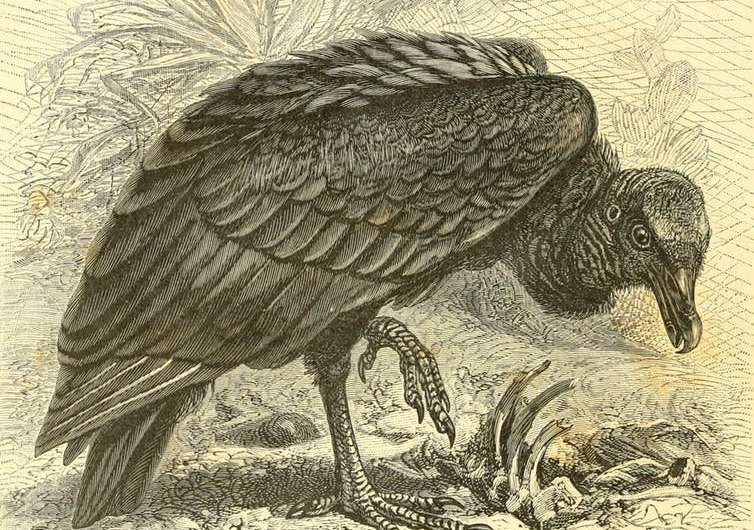What medieval artists teach us about animal sex

The prevailing view is that animals mainly have sex to reproduce. Until recently, therefore, scientists assumed that animals were relentlessly heterosexual. This is the message conveyed by countless zoos, wildlife documentaries, books and films. Think March of the Penguins or 2014's controversial Noah. Such representations perpetuate the belief that animals are best seen through the lens of human "norms" of gender, sex and family.
The presumed "heterosexuality" of animals has also traditionally provided a backhanded justification for regulating human sexual activity. Acts of homoeroticism or gender bending get cast as "unnatural" insofar as such things aren't perceived as being clearly observable in other species.
But arguing against these viewpoints, biologists such as Bruce Bagemihl and Joan Roughgarden have begun putting forward evidence that animal sexuality comprises an array of behaviours, gender expressions and body types. In fact, reproduction is marginal to many species. Scientists impose human categories on animals at their peril. And increasingly, popular culture is also getting behind these moves. The web is inundated with articles and blog posts on such topics as The 25 Gayest Animals or Our Transsexual Pets. A search on YouTube turns up a wealth of related footage.
Yet a historical perspective on these issues is often lacking. Categories such as "gay" or "trans" are not ageless absolutes, after all. The word "heterosexuality" itself only began being used around 1900, initially in medical circles: a 1923 dictionary defines it as a "morbid" sexual passion for the opposite sex.
And what seems on the surface to be a relatively recent development – the discovery of expressions of queerness in the animal kingdom – turns out to have a long and dynamic history. It's important to take a long view on the issue.
Animal sex in the Middle Ages
During the Middle Ages, discussions of animal sex proliferated in bestiary manuscripts. Designed to present a Christianised interpretation of the natural world, these volumes perpetuated a traditional Noah's ark view of biology. But they also often featured creatures that don't seem to fit the "heterosexual" mould.
For example, the hyena, which medieval scholars thought possessed male and female sexual organs that the animal used indiscriminately, is depicted in some illustrations with enlarged humanoid genitals. Medieval Christian commentators interpreted the beast's gender-switching behaviour as a figure for "Jewish" duplicity as well as sodomy.
Conversely, the male beaver, believed to castrate itself to escape human hunters, was likened to a chaste man of God. Others whose sexual habits were turned into spiritual lessons included vipers (presented as serial adulterers with a taste for fellatio) and vultures (which allegedly bred without sexual union).
Animals allowed medieval audiences to contemplate taboos such as oral sex or promiscuity, while casting the religious ideal of chastity as a "natural" human activity. Bestiaries were therefore preoccupied less with "heterosexuality" as such than with the need for all humans, regardless of gender, to channel their desires towards the man upstairs.
Medieval bestiaries set the stage for a lively debate on sex and gender among humans. Arguably, a similar conversation is playing out today. The presumed heterosexuality of animals is giving way to glimpses of gender and sexuality that exceed our human-centred grids.
The medieval science of sex
Books translating and commenting on the biological works of the ancient philosopher Aristotle also sometimes adopted such perspectives. Like some of the images circulating in the bestiaries, these illustrations presented a kaleidoscopic view of creaturely coitus.
For instance, in the 13th century, Albert the Great wrote an influential commentary on Aristotle's De Animalibus. A student copy of Albert's text, owned by scholars at the Sorbonne in Paris, contains a series of images depicting copulating creatures.
One page illustrates a section of the text where Albert is discussing what he calls the great "diversity" of nature. In the margins viewers are afforded a glimpse of the sexual dimension to this diversity. Fish mate belly-to-belly. Birds mount or touch beak-to-beak. A donkey gets astride a whinnying mare. Serpents get themselves into a real tangle.
Meanwhile, in the centre of the same page, a pair of naked humans, framed in a gold initial, are represented locked in an intimate embrace, the lower halves of their bodies chastely obscured by the decoration. This seemingly corresponds to Albert's argument that whereas non-humans mate noisily and without shame, humans do it silently and in private.

Diversity, then, is crucial to visions of animal sex in medieval art. Not only do humans differ from other animals in the way they copulate, but artists also imagined a spectrum of possibilities among nonhuman animals.
Monstrosities
Another scene in the same book, focusing on generation and sex difference, shows how even within the human animal there exists sexual variety. In the accompanying text Albert asserts that what he terms "monstrosities" usually result from acts of intercourse between animals of different species but with similar natures. But some "monsters" result from a multiplication of members, as in those humans who are born possessing both sexes.
A page at the beginning of the relevant section features an image of a naked male touching the stomach of a heavily pregnant female – a conventional image of the end to which reproductive sex leads.
Corresponding to Albert's description of the "monstrosity" he calls "hermaphrodite", however, the illustrator has also included a rare medieval depiction of an intersex person possessing both male and female genitalia.
What's more, the same margins also feature other examples of monstrous births, depicted as human-animal hybrids, including a lion-man with a bearded human head. Such imagery suggests that even within the sphere of reproduction there is potential for variety and multiplicity.
Such images in medieval art draw attention to the fact that we humans, too, are stranger and more complicated than we sometimes suppose. It's a lesson from which those who persist in finding reflections in "nature" of human categories of gender and sexuality today can surely learn.
Provided by The Conversation
This article was originally published on The Conversation. Read the original article.![]()
















